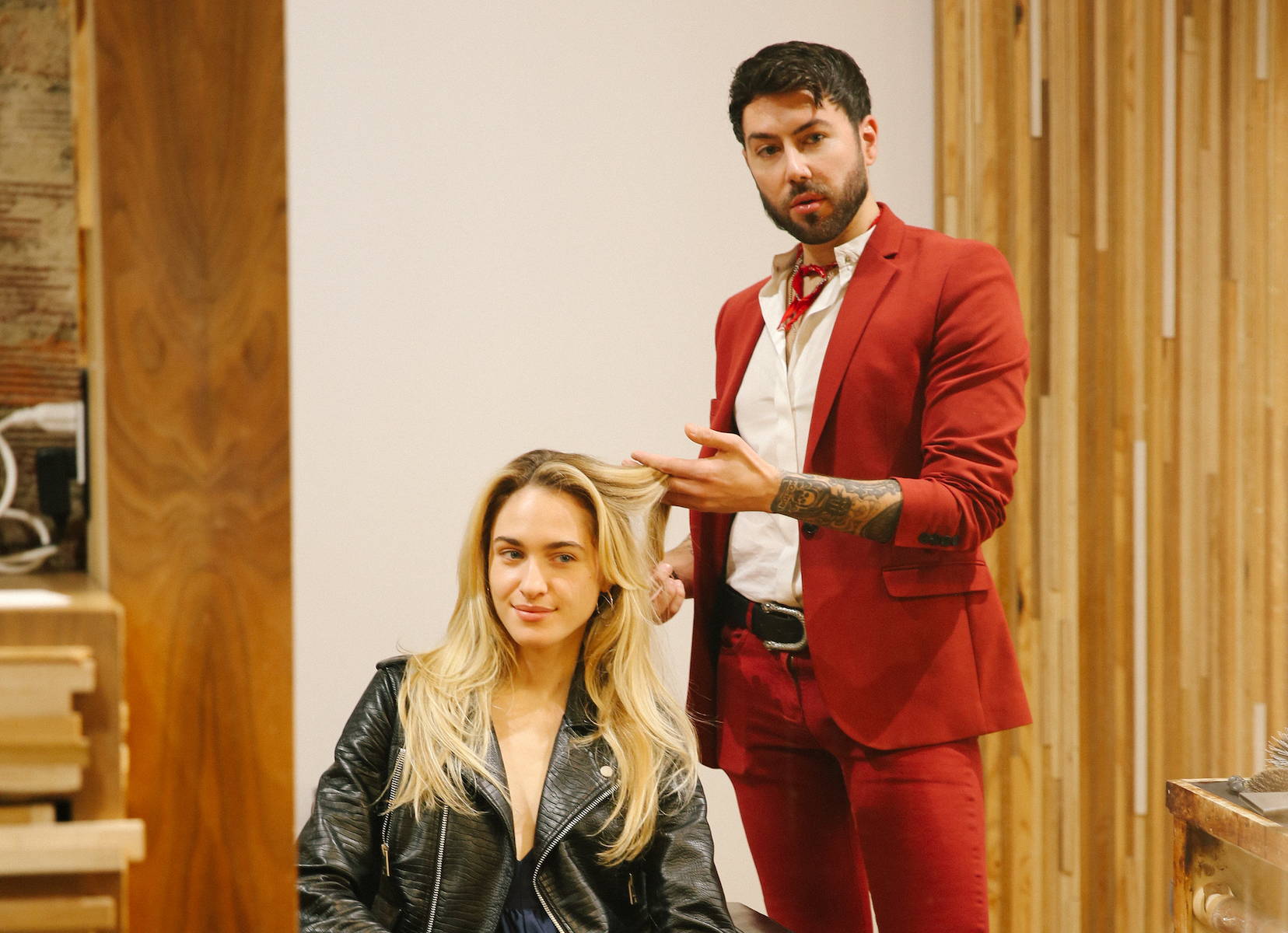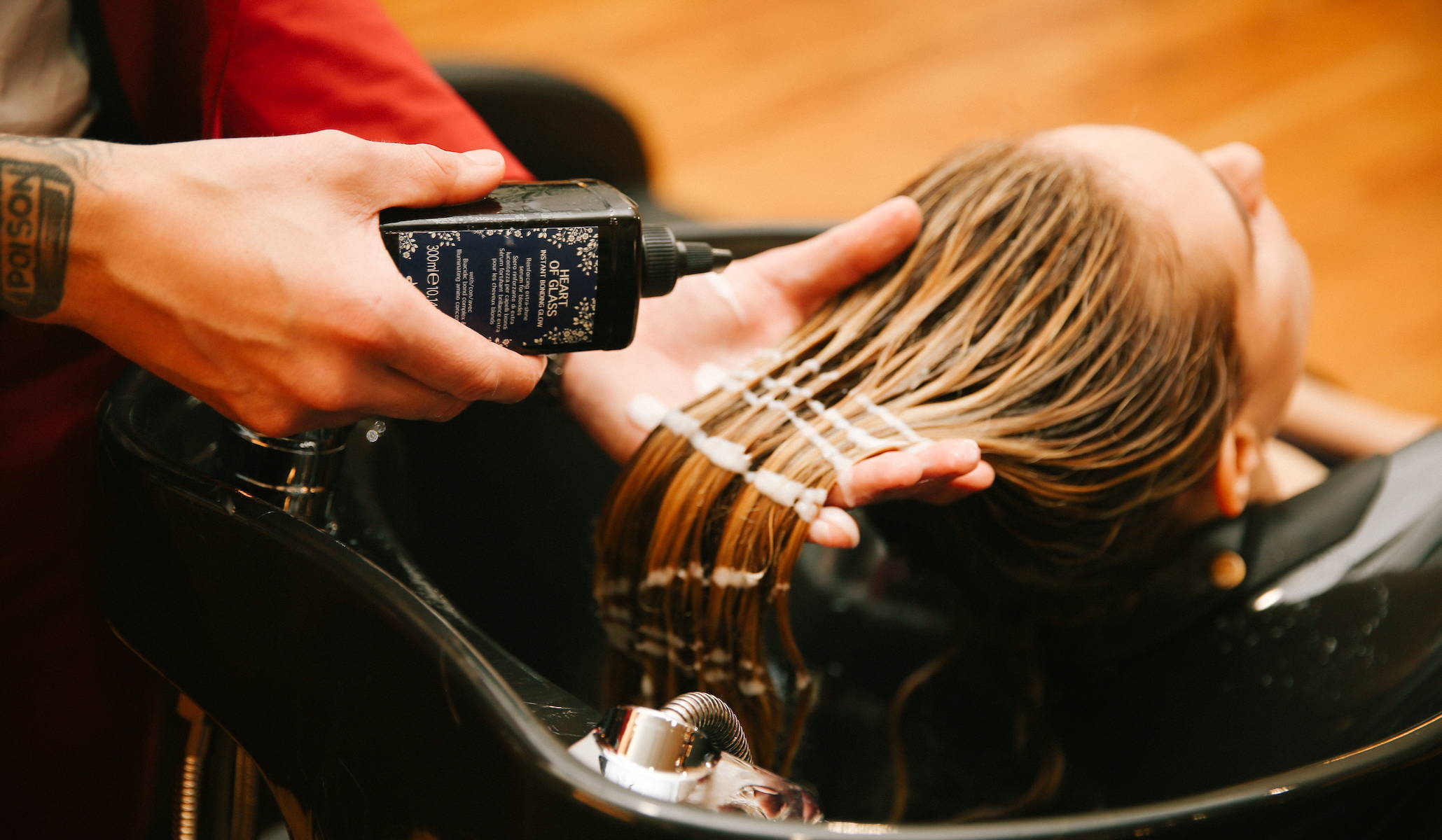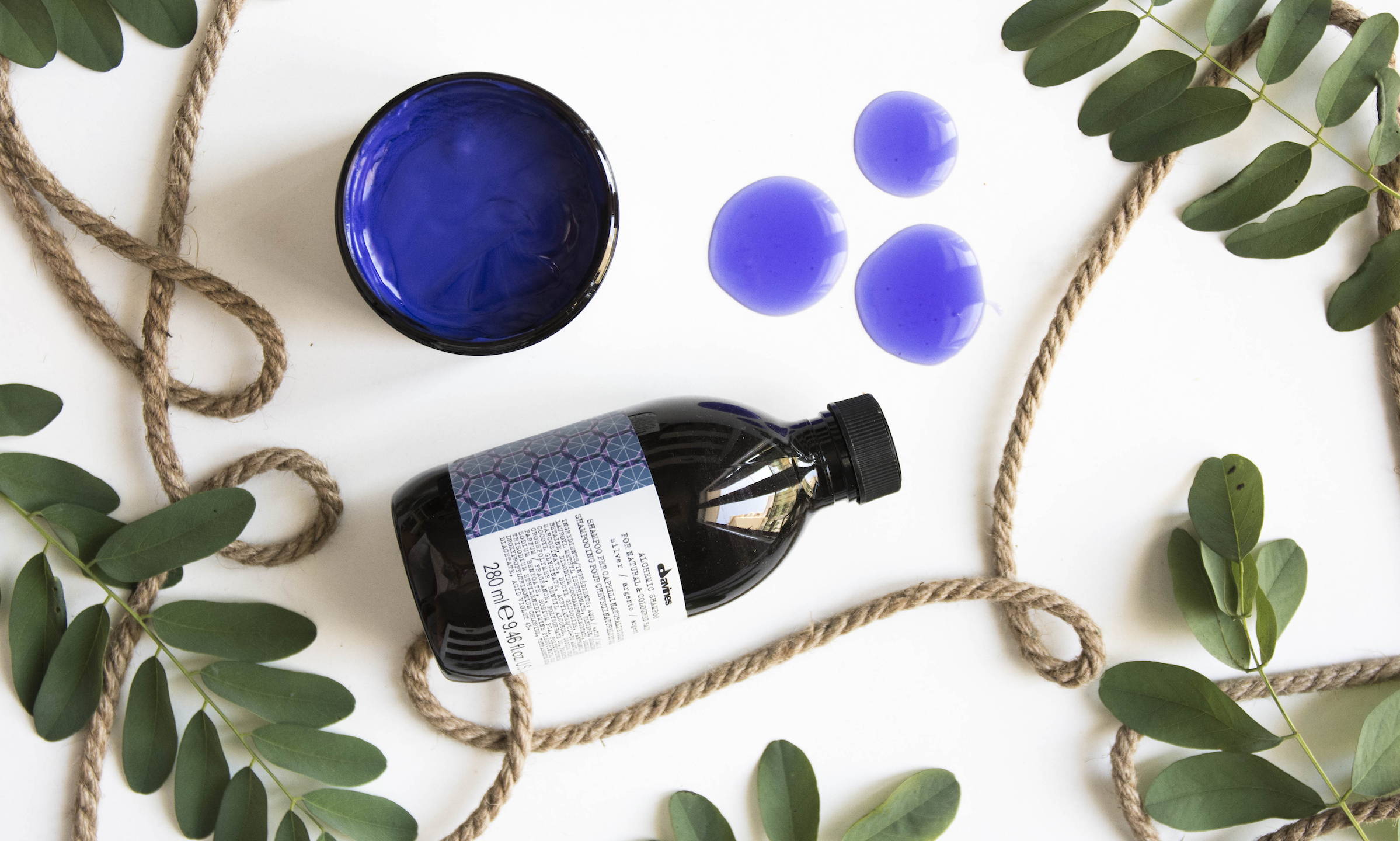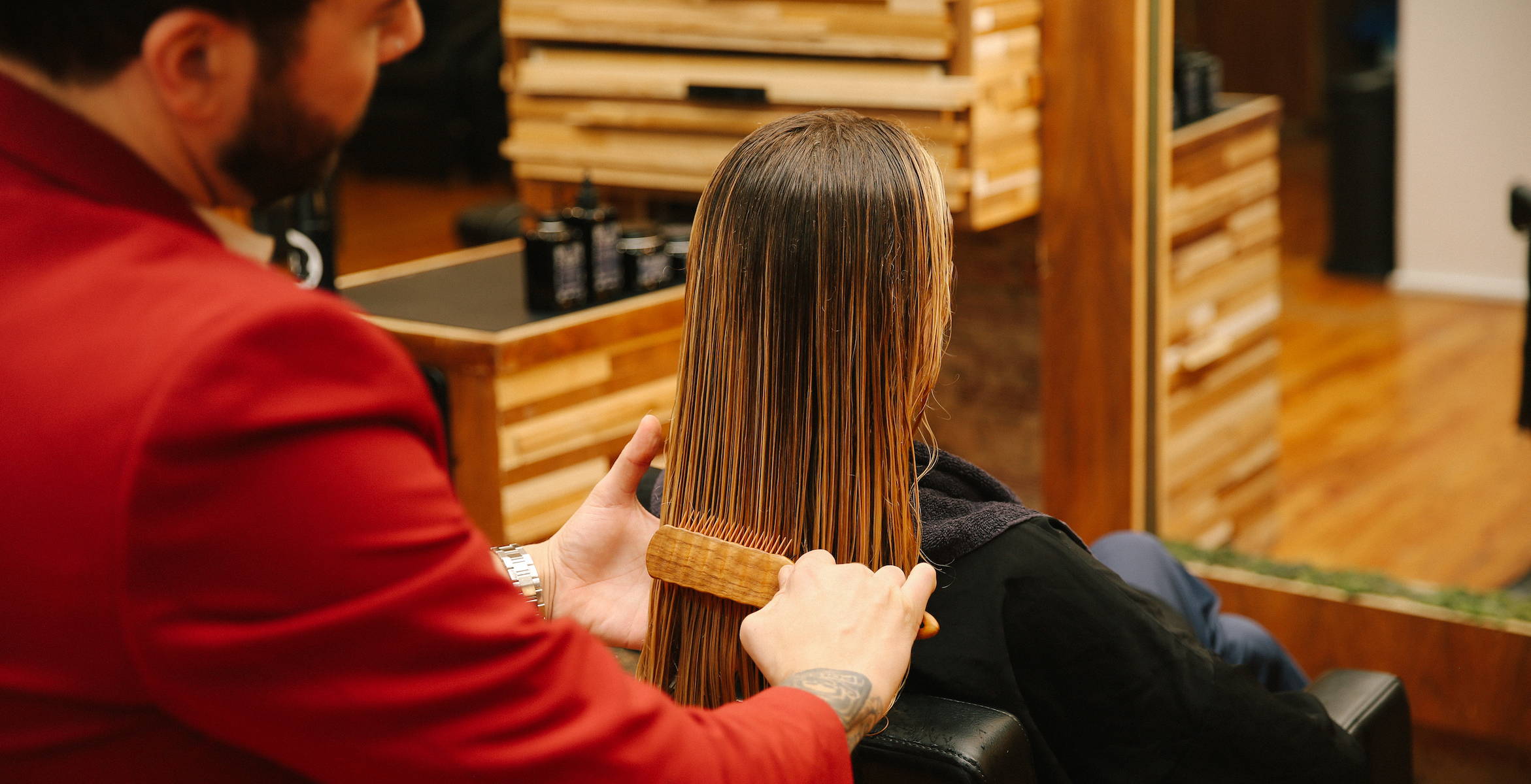Free Carbon Neutral Shipping On Orders $75+, Plus Free Samples!
Buy Now and Pay Later in 4-interest free installments with Klarna
Free Carbon Neutral Shipping On Orders $75+, Plus Free Samples!
Buy Now and Pay Later in 4-interest free installments with Klarna
Rendre la beauté durable
We Are Circular
Lien vers vos collections, vos ventes et même des liens externes.
Refer Your Friends and Get a Free Gift!
Whether you’re a full-on blonde, or just have some lightened strands in the form of highlights or balayage, you’ve likely experienced brassiness. Those unwanted warm orange and yellow tones that creep up in blonde hair are a common beauty woe. But what causes brassy hair? Can you prevent your blonde from turning to brassy tones? And how do you get rid of brass once it appears? We’re telling you how to get rid of brassy hair ahead.
Brassiness is a term used to describe the unwanted yellow and orange tones that show up in bleached or dyed blonde hair. During the hair color process, the hair cuticle is lifted, releasing the underlying green pigments in the hair shaft, leaving behind the red. This process is called oxidation, and if not properly neutralized or maintained, these warm red tones can become more pronounced, giving the hair a brassy tint. Brassiness often results from exposure to elements like sunlight, hard water, or even the products used in the hair care routine. It most often happens to blonde color, but these orange undertones can also appear in gray hair and brown hair that’s been dyed as well. To combat brassy tones, it's essential to incorporate a color-correcting purple or blue shampoo into your hair care routine.

Any of the following can cause your blonde to go brassy:
No matter how amazing your hairdresser or colorist is, once you bleach your hair, or use hair dye in general, it has a predisposition to go brassy. Because all hair has some underlying warmth, the removal of your natural hue makes brass tones more visible.
Sulfates strip your hair color, causing brassiness. Switch to a sulfate-free shampoo and use deep conditioners and hair masks specifically for color-treated hair. This will help prevent color fading.
Hard water is naturally high in mineral content. These minerals can build up in your hair, leading to you guessed it- brassiness! This type of water (also known as hard water) also prevents the penetration and absorption of moisture.
Exposing your strands to the sun excessively can dry out your hair and fade your color. When your hair is exposed to oxygen and UV rays, it gets dehydrated and depleted of vitamins and nutrients. This causes a loss of the pigment, causing oxidation and brassy hair.
Swimming in both chlorine and salt water strips the hair of its natural oils and alters the integrity of the hair shaft. The hair cuticle becomes exposed and weak, making it rough and likely to cause damage or breakage. These cuticles reflect light poorly, making the hair look dull, dry, and brassy.
If you (or someone you live with) smoke, chances are your hair is ashy or brassy. The brassiness caused by smoke is actually a yellowish film absorbed into your hair.

Here's what you need to do to fix those unwanted warm tones once and for all.
A shower filter acts as a barrier, effectively reducing harmful elements, and promoting healthier hair and skin. It effectively removes the hard minerals and gunk that lead to brassy hair. Installing a shower filter can have a significant impact on the health of your hair and skin, and they're an easy DIY install, without the need for major plumbing tools.
A majority of your hair color is lost just by rinsing your hair with the wrong water temperature. Hot water strips the hair of its natural oils and exacerbates brassiness as it opens up the hair cuticle, making it more porous. increased porosity allows minerals from hard water, as well as environmental pollutants, to penetrate the hair shaft and contribute to the unwanted warm tones. Using cool water when you wash your hair is better for preserving its color. If you absolutely can’t give up the hot showers, finish with a blast of cool water as the final rinse. This will close your hair’s cuticles, making your strands appear glossier and brass-free.
Sulfates strip your strands of their natural oils, leaving them more susceptible to brassiness. Blonde hair needs a lot of moisture. To keep the dreaded brass away, you need a sulfate-free shampoo. They’re inherently more moisturizing and gentler on your hair.
Using a hair toner can control brassiness and make your existing color more vibrant. Semi-permanent and demi-permanent hair colors, glosses, and tinted shampoos and conditioners are all considered toners because they contain pigments to adjust hair tone. Typically, the pigment delivered with toning lasts around three to four weeks. You can try toning your hair at home or see your stylist for an in-salon treatment.
If you’re a bleached blonde, a purple shampoo (sometimes called a shampoo for silver hair) is your number one weapon against going brassy. The purple shampoo contains crushed purple pigments to neutralize the yellow tones. Because yellow and purple are on opposite ends of the color wheel, the purple pigment can cancel out the brassiness. If you're adding a purple shampoo to your regimen, start by alternating it weekly with your sulfate-free shampoo. Build up as needed.

The sun is another major culprit when it comes to brassy hair. Protect your strands from the elements by using hair products with SPF. Re-apply them to your hair a few times while out in the sun even if you plan to wear a hat.
Pools are notoriously known for making blondes turn brassy. Chlorine strips the hair of its natural oils and leaves it dry, brittle, and damaged. The more damaged the hair, the more susceptible it is to brassiness. The next time you hit the pool, douse your hair with bottled water before jumping in. This will saturate it with non-chemically altered water so it will absorb less chlorine. When you’re finished in the pool, shampoo and condition your hair immediately to undo any potential damage.
This may seem like a no-brainer, but hydrated hair is healthy hair. And the healthier your hair is, the less likely your color will fade. At least weekly, deep condition your strands with a hair repair mask to help hydrate them.

If your natural hair color is darker and you want to go lighter, you’re already more susceptible to brassiness than a natural blonde who wants to go lighter. The darker the hair, the more of a challenge it is to lift the underlying pigment out of the hair. To minimize your chances of going brassy, don’t lighten your hair beyond two shades of your natural color. Or ask your colorist to work in highlights and lowlights instead of going with a single-process all-over blonde. This will minimize your chances of ending up with a full head of brassy hair.
Whether you’re a full-on ash blonde shade or just have some lighter pieces in the form of balayage, you’ve likely experienced brassy hair. Those unwanted warm tones like red, yellow, and orange, that show up in blonde hair can be a real bummer. And what’s worse, you could be unknowingly contributing to the brassiness. Wondering how to get rid of brassy hair? Evaluate your routine and tweak it where you need to. With our product recommendations, easy hair hacks and tips, you’ll be rid of those orange and yellow tones and brassy hair in no time. And remember to use only the highest hair products like the ones from Davines. All our formulas are free of harmful toxins, use many natural ingredients, and are made with renewable energy and packaging that minimizes the environmental impact. Our hair care isn’t just good for your hair, it’s good for the planet.
by Jaclyn LaBadia, featured contributor
S’abonner pour rester à l’affut des ventes et promotions, les lancements de nouveaux produits et bien plus…
Abonnez-vous à notre newsletter pour bénificier de la livraison gratuite sur votre première commande.
La soumission de ce formulaire confirme que vous acceptez de recevoir les avis de lancement, les promotions et les nouvelles marketing de Davines North America Inc. par courriel.



Laisser un commentaire
Les commentaires sont approuvés avant leur publication.